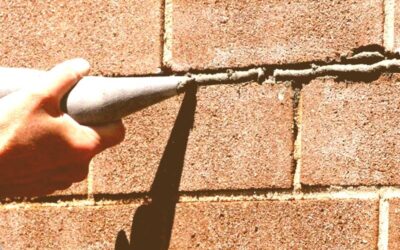Natural stone is a superb construction product in terms of sustainability. An efficient design of masonry structures can only be possible when a project is done practically using natural stone. Masonry construction was faced with a variety of challenges. The importance of energy savings and the challenge of sustainability has forced the manufacturers of natural stone to make innovative products. Natural stone wall masonry is an excellent position in comparison with other building methods.
1. LOW MANUFACTURING COSTS
The production of raw materials for the masonry industry doesn’t generate production wastes. The residual raw materials can be directly returned into the shaping process and recycled into the process of raw materials production. A masonry wall requires only about 4 kg of mortar per square meter of the wall. A natural stone wall can be manufactured more easily than wall elements made of excessive concrete. Whereas other customary building methods require a drastic amount of cost, exterior walls made of natural stone masonry can be built at lower manufacturing costs.
2. Keep The Standards
The wall constructions of massive masonry with customary wall thicknesses can reach heat transfer standards according to the passive house standard. Combining with highly thermally insulated windows or doors and high energetic quality of further building components, the house temperature asymmetries can be avoided with exterior masonry walls made of natural stone. Such a construction method features an important advantage at high outdoor temperatures in summer. Natural stone walls are able to absorb heat and to release it delayed which means that they are able to buffer the heat.
3. A RECYCLED BUILDING MATERIAL
Natural stone is completely recyclable. It can be used in road and earth constructions as well as stored for the production of concrete building materials. This is an important aspect since high reutilization and recycling rates lead to decreased environmental pollution due to the otherwise necessary disposal of wastes. Therefore, there is potential to increase the production of higher quality recycled building materials.
4. The Less Environmental Impact
There are remarkable recognitions of a model homemade of stone wall masonry in order to be able to generate a complete sustainability balance for residential buildings. The principal result of these certification examples is the findings regarding the life cycle assessment. For instance, a concrete house has slightly higher environmental impacts as compared to the masonry variations. In brief, whereas the massive multi-family model houses made of masonry feature a life cycle quality, the reference models made of reinforced concrete and wooden construction do lack the sustainability standards to some extent, and in some respects, they are even better.
5. Innovative Designs And Construction
The design of Natural stone wall masonry can be made using simple and practical tables starting at the initial measurement up to the final verification of the load-bearing capacity. In this context, it must be ensured at the same time that this procedure enables material-efficient solutions.
All in all, masonry construction is in an excellent position with regard to teaching in order to convey the issues in a practical way and to raise enthusiasm for this building method among future generations of engineers and architects.

Stone Masonry
Stonemasonry is a type of building masonry construction that uses stones and mortar. Missionaries use this construction technique mostly in building foundations, floors, retaining walls, arches, walls, and columns. In massive masonry construction, builders used the stones are natural rocks. These natural rocks are cut and dressed in proper shape in order to use it in masonry construction. Stones are the most durable and stronger than any other building materials in masonry construction. Scroll down to have a brief explanation of the materials and the sort of stone masonry construction.
Materials Used for Stone Masonry
The materials used for stone masonry are:
- Stones
- Mortar
Stones
The natural stones used for masonry construction must be hard, tough, and free from cracks, sand holes, and cavities. The stone preference for particular work is dependent on the availability of the stone and the importance of the structure. The most frequently used stones in masonry construction are Limestone, sandstone, granite, marble, laterite, etc.
Mortar
Mortar is an essential binding material in massive masonry construction .Cement or lime with sand and water form the mix for masonry mortar. The mix formed is uniform in nature.The two main factors affecting the selection of mortar for masonry are:
- Strength required
- Colour of the stone
- The loads coming on the structure
Classification of Stone Masonry
Classifications of Stone Masonry are:
- Rubble Masonry
- Ashlar Masonry

Rubble Masonry
This kind of stone masonry has two forms: either undressed or roughly dressed. Some key factors to determine the strength level of the rubble masonry :
- Quality of Mortar Used
- Use of Long through stones
- Nicely filled with mortar
Rubble masonry can be again classified into
a. Coursed Rubble Masonry
b. Uncoursed Rubble Masonry
c. Dry Rubble Masonry
d. Polygonal Masonry
e. Flint Masonry
a. Coursed Rubble Masonry
Builders commonly apply Coursed Rubble Masonry in the construction of public buildings, abutments, residential buildings, and piers of ordinary bridges.
b. Uncoursed Rubble Masonry
A scrappy masonry is the cheapest and toughest form of stone masonry construction. Massive construction uses stones of varied shape and size.
c. Polygonal Rubble Masonry
Polygonal Rubble stones for masonry are roughly shaped into irregular polygons.
d. Flint Rubble Masonry
They are extremely hard but brittle in nature. The flintstone maintains a thickness level that varies from 8 to 15cm.
e. Dry Rubble Masonry
Dry Rubble Masonry is mostly used in pitching the earthen dams and the canal slopes.

Ashlar Masonry
Ashlar masonry is formed using accurately dressed stones that possess uniform and fine joints. The thickness of the joints ranges about 3mm which is arranged in various patterns. The size of the stone blocks and the thickness of the walls do proportion each other.
The various types of ashlar masonry are:
- Ashlar Fine Masonry
- Block in Course
- Chamfered Masonry
- Rough Tooled Masonry
- Rock or Quarry Faced Masonry



Excellent article! We will be linking to this particularly great content on our site. Keep up the great writing. Sadye Even Bruner
Comments are closed.